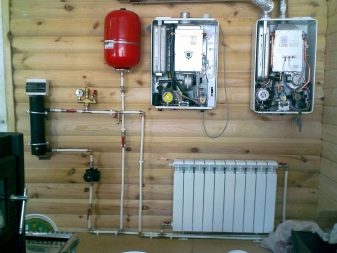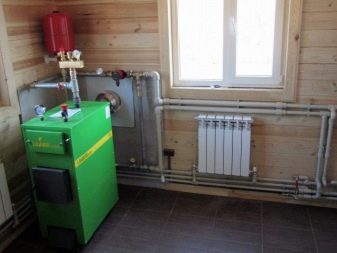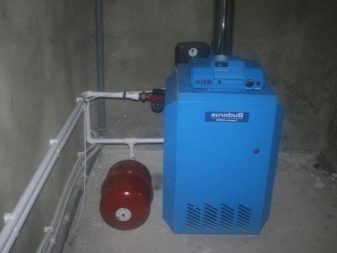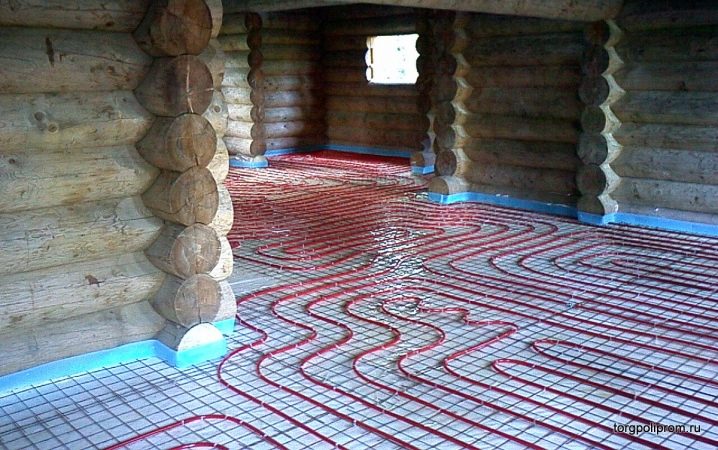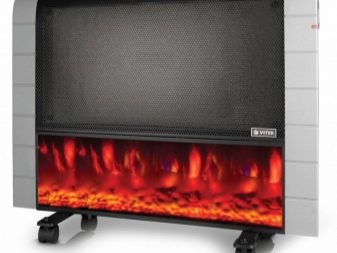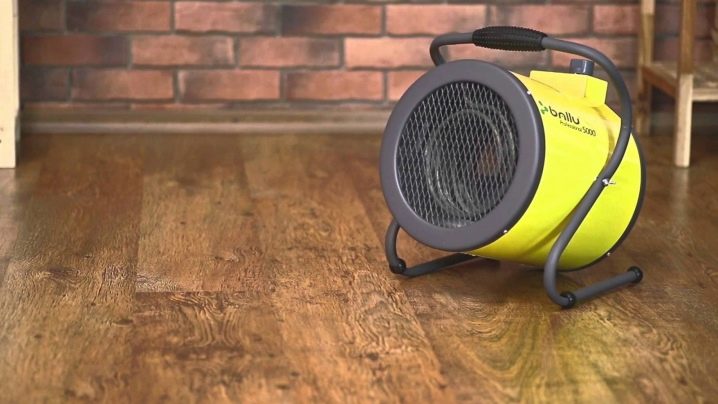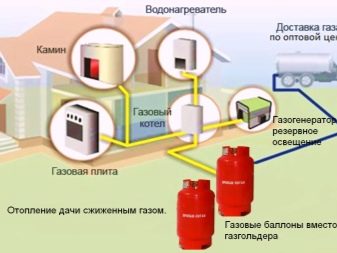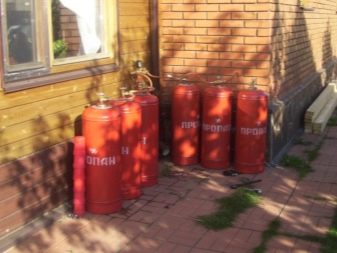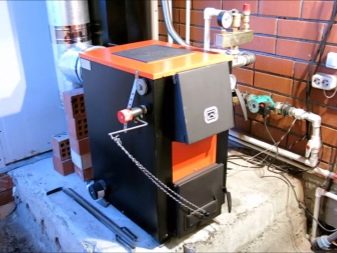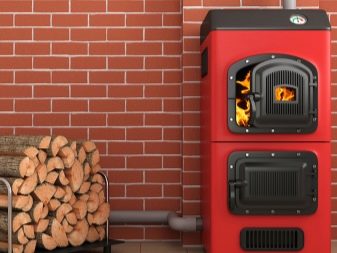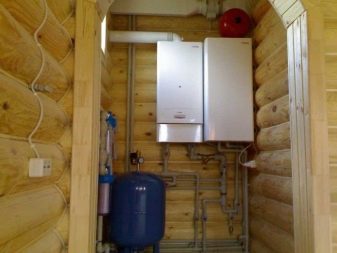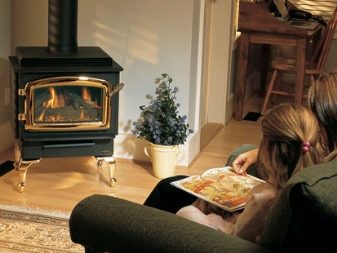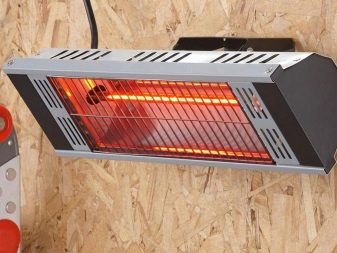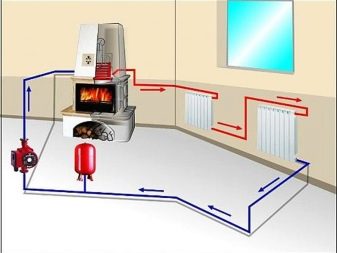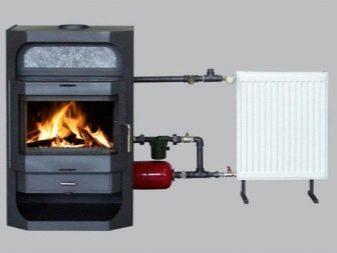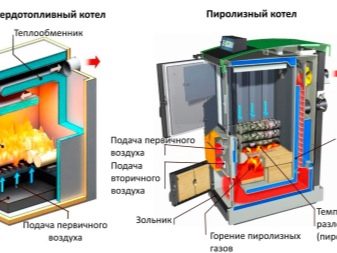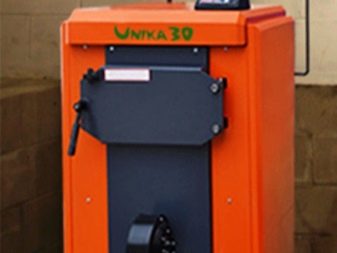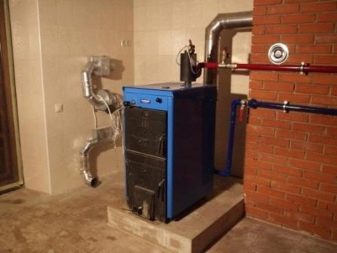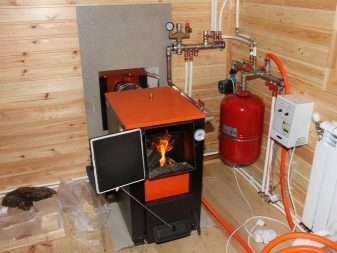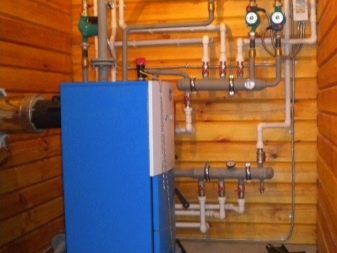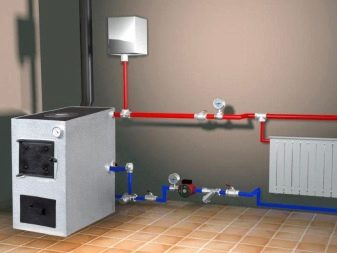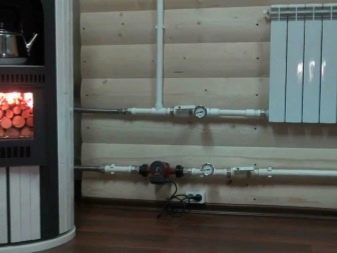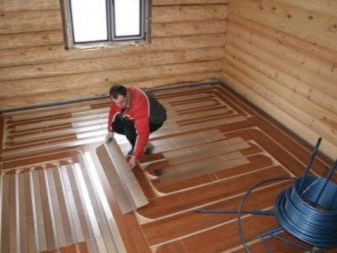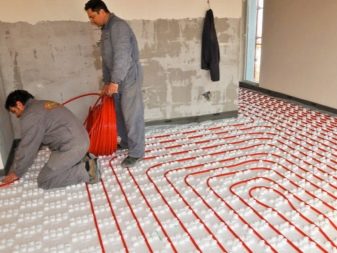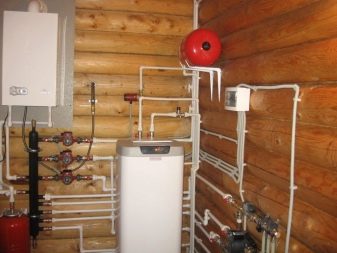How to make heating in the country?
Visiting the cottage in the winter, spring and autumn is a great way to relax and gain strength. In such a situation, one of the main issues is to ensure the heating of the house in a sub-zero temperature environment. To solve this problem, various electrical appliances or stationary heating systems operating on gas, electricity or solid fuels can be used. Each option has its own advantages and disadvantages and is beneficial with certain features of the country house and its location. To decide which of them is the most profitable, it is worth exploring the issue in more detail.
Heating methods
For a dacha heating system, it is possible to use both a permanent system based on a boiler and radiators, as well as mobile devices such as infrared heaters, fan heaters, oil batteries and others.At the same time, almost all mobile options are powered by electricity, and a stationary boiler can be both electric and gas, and even solid fuel, although without a brick kiln with a good exhaust system this option is accompanied by a number of difficulties. The country house should have not only efficient heating, but at the same time the variant of this device should be economical. You can use all kinds of lamps, electric heater, heat gun, wood heating or pellets, learn to work with propane cylinders or air conditioning.
Electricity
The simplest method of heating a summer house is electricity. Most types of heating equipment operating on electricity do not require any skills and knowledge to install, except to become familiar with the methodology and study the instructions on the device. The most common types are: electrofireplaces, IR emitters, oil batteries and fan heaters. In addition, an electric boiler can be installed for full heating with hot water.
The main advantage in all variants, except for the electric boiler, is the absence of the need for major repairs, as well as the advantages include the following:
- equipment is a ready-made units and devices that do not require separate maintenance;
- can be switched on and off if necessary, do not need preparatory work to start and stop the bulk system;
Weaknesses include the following:
- dependence on uninterrupted power supply, although this can be compensated by a backup diesel generator;
- electricity is more expensive than gas and solid fuel.
Electrofireplace (reflector)
This device performs two functions. First, it heats the room. Secondly, imitating a natural fireplace, creates a pleasant aesthetics in the room. The characteristic features of his work include zoned room heating, which is carried out only within a certain radius around him. In this regard, for heating a house consisting of several rooms, you will need either one powerful device or several separate ones. It is also worth noting the strong over-drying of the air that occurs as a result of the work of the electric fireplace, which can negatively affect the comfort of being in a heated room.
Fan heater
This heater is equipped with a heating element and a fan that promotes the circulation of heated air.It is great for situations when on arrival in a cold room you need to quickly heat it. Moreover, due to its compact dimensions, the transportation of the device is not burdened by special difficulties. It is most advisable to use a fan heater in a small cottage, visited from time to time. Weaknesses include the need to regularly turn off the appliance for cooling, and therefore its use in a permanent heating system is unacceptable.
Oil heater
In fact, a steel battery filled with mineral oil heats the room with electricity. Although this heater is mobile, it will take male power to transport it in the hands. Heating is slow, but the heat output is very high - the oil absorbs and retains a huge amount of heat, and the radiator continues to heat the room for a long time even after turning it off. It is an excellent option when visiting the cottage occurs sporadically for several days. The heater is able to work continuously without shutdown, and therefore can be used as an element of heating at the place of permanentresidence, and in the country, which makes it a dual-purpose device and allows you to save on equipment.
Infrared heater
This heater heats the room with infrared radiation. Characteristic features are low power consumption, as well as the absence of air drying inherent in both the heater and electric fireplace. Portable emitters of various sizes are installed and installed on the floor, walls or ceiling, on their surface or under panel cladding. The first option is compact and light weight, the second is installed on an ongoing basis and practically does not occupy the storage space, and its installation is simple and accessible to everyone after studying the instructions.
Electric boiler
Of all types of electric heating in terms of electricity consumption, this option is the most profitable, but it requires the installation of stationary equipment, as well as alternative versions on gas and solid fuel, which significantly increases the cost of the system. In addition, in comparison with stationary boilers for other types of fuel, although it is the safest and most convenient to use, it is the most expensive.Of course, you should not worry about gas leakage and monitor the tightness of the system or worry about soot and dust, as with coal. Another significant advantage is ubiquitous electrification, which cannot be said about gas, and a truck with coal will not travel everywhere and not every season, plus you will have to reload coal to the storage location, but from it to the furnace. The electric boiler is an excellent solution for summer cottage, which is used as a place to live regularly in the winter.
Gas
Gas is a source of fuel for a stationary heating system with an optimum ratio of operational features. Gas is convenient, there is no need to transport, unload and carry as coal or firewood, at the same time it is cheaper than electricity, and gas transmission networks are unusual for fuel supply, which is not the case with electricity. For arrangement of heating of this type, installation of a boiler, pipes and radiators, as well as exhaust gases for chadic gases is required. The main problem is not the widespread gasification of country farms, in this case the alternative is gas cylinders, but this requires a vehicle for transportation and a gas station in the near radius for charging empty tanks.Portable gas heaters also work on gas, which allow you to comfortably spend time in the gazebo, on the veranda in the winter for cooking kebabs or other food and its further use.
Solid and liquid fuels
Heating a dacha with coal, firewood or other fuel in the absence of gas and electrification is an acceptable alternative that has its own strengths and weaknesses. For example, a coal-fired stove, whether it is a small metal or brick-lined, gives excellent heat transfer and heats even a not perfectly warmed cottage in fierce frosts. Firewood is characterized by widespread availability, and their fire calories depend on the particular breed. In addition, if the cottage is not intended for permanent residence in the winter, one old tree from the site, preferably large as a nut, is enough for more than one year of comfortable rest. Most often, a small metal furnace is used to give. The brick version, accompanied by the reconstruction of the building, is beneficial only for permanent residence in the house, and the foundation must correspond to the load.
For the arrangement of furnace heating suitable steel, and preferably cast iron stove. The heating rate of the room in this case will be approximately 30–60 minutes. At the same time it is necessary to regularly put fuel and clean the ashpot, and in addition, check the thrust in the outlet pipe. It is easy and convenient to use such a stove, it is mounted without special surface preparation and is highly reliable. In addition, there are no problems in water systems with the need to drain water due to the threat of pipe rupture when the dacha freezes.
Power calculation and system selection
When choosing a heating system, the main criterion is the availability of fuel. With permanent residence, the most preferable option is gas. In its absence, it is worth choosing electricity. Well, if it is not there, then a solid fuel option, which, though for purchase, is not the most expensive, but constant transportation, and if you live in a country house with coal or firewood, you need a lot, and the specificity of operation will have its say. If the cottage is a place of temporary rest, the situation changes. In this case, the installation of heating with a water circuit will require a constant discharge of water, although there is an alternative with the use of antifreeze.Even in the latter version, the system must be started and stopped each time, and in addition, wait for a full warm-up.
It is much more convenient and easier to use electric portable IR emitters, an oil battery or stationary IR panels to heat the cottage on visiting days. As well as a good option remains a cast-iron or steel furnace on coal or wood, which provides rapid heating of the room and the whole house. Of course, this should take into account the material manufacturing house. It is not safe to put a stove in a log or log house, so IR devices are the best choice, but mounting them under wood panels will not work because of the strong thermal insulating qualities of wood. If the cottage is made of brick or concrete, a stove or water heating will be the optimal choice. Heat supply, regulation, heat transfer coefficient and its return in the system of a country house or cottage must first of all be economically profitable. Heating appliances can be made with your own hands or selected in a store, the work technology is the same and the house can be heated by any option. It is advisable to choose a low-cost heating, which has a remote start.
Water heating: the scheme and the necessary materials
Stationary heating with water or antifreeze is most convenient and comfortable. It provides uniform heating of the whole house and is used in summer cottages that exceed 100 square meters in area. m, with a permanent residence in the cold season.
The scheme of such heating is as follows:
- the boiler heats the water;
- the pump pumps water through the system, thereby moving the heated fluid through the pipes through all radiators;
- the surplus, which has increased in the volume of liquid, falls into the expansion tank of an open or closed type.
Installing a heating system without a pump is a forced type, which is not recommended to use because of the lower reliability and low heating rate. It is inferior to the system with a pump several times.
For arrangement of liquid heating will need components such as:
- radiators - usually their number is calculated by the number of windows 1: 1, and the number of sections in radiators at the rate of 1 per 2 square meters. m square;
- pipes - in accordance with the length of the system;
- expansion tank - must exceed the volume of liquid by 10%;
- the pump is 1kV in power.m square multiplied by 100 watts;
- fittings and other valves;
- boiler: gas, electric or solid fuel.
Interesting options are pyrolysis and gas generator boilers with an efficiency of up to 92%. The best materials for radiators are aluminum and bimetal.
Installation of boiler and pipes
The boiler is mounted first, for its placement it is better to choose a non-basic utility room. In addition, in this room it is worthwhile to equip a good exhaust, especially with the option of operating a coal-fired boiler, which is distinguished by large volumes of soot and dust. In this regard, the installation of the boiler in one of the common areas, not fenced off by a solid door, will lead to contamination of the finishing coating, not only in the room itself, but throughout the house. If there is no specially allocated room, it is worth freeing up a pantry or utility room for these needs, in extreme cases, put the boiler in the corridor. When distributing pipes, radiator locations are primarily taken into account.
For the installation itself will require the following elements:
- radiators;
- pipes;
- fittings and other valves;
- brackets;
- expansion tank, the volume of which must exceed the volume of water in the system by 10%;
- circulation pump;
- pencil;
- building level.
The installation process of the heating system proceeds according to the following plan:
- according to the locations of the planned installation of radiators, pipes are laid on the marking;
- radiators are installed and connected to the pipeline by means of stop valves;
- an expansion tank is installed so that it is located at the highest point of the hydraulic system;
- the circulation pump is installed and connected;
- a trial run of the system is carried out to establish the tightness of all joints and the pipeline.
Installation of heated floor
Installation of infrared floor heating does not require any special conditions and can be carried out both in the warm and cold season. Installation works do not require special skills and are light and simple. First you need to buy an infrared film, hydro and thermal insulation, thermostatic unit and material for coating, the best option is a laminate.
The installation proceeds as follows:
- the floor surface is cleaned and leveled;
- the thermostat is installed so that it is convenient to use;
- heat insulation is laid and fixed with mounting tape;
- the strips are laid according to the instructions in the instructions; the surface is not lined at the places where the furniture is placed;
- pieces of the film are fastened together, and the places of the cuts are insulated with bitumen tape;
- the power supply is connected to the heating elements, and from it to the temperature control unit;
- the system is tested for readiness for work;
- waterproofing is laid, and on it a floor covering of choice: laminate, carpet or another option.
Useful tips
In addition to the basic rules and regulations, there are small nuances capable, one way or another, to deepen knowledge in the issue of arrangement of heating in the country, and as a result improve the final result.
- The speed of heating is directly dependent on the conservation of heat in the room. Unfortunately, a house is not a thermos and there are weak zones in it that contribute to heat loss. The most vulnerable place is the cold wall, because up to 40% of heat goes through it, then there are doors and standard double-glazed windows — up to 20% and the least vulnerable floor — up to 10%. If during the warm period to make them warming, it will not only affect the heating rate on arrival at the cottage, but also save money on fuel and eventually pay for the insulation completely.
- The most cost-effective source of heat is gas.In the presence of the highway should prefer it as a fuel for the heating system.
The fact that it is cheaper to heat a country house, see the following video.

